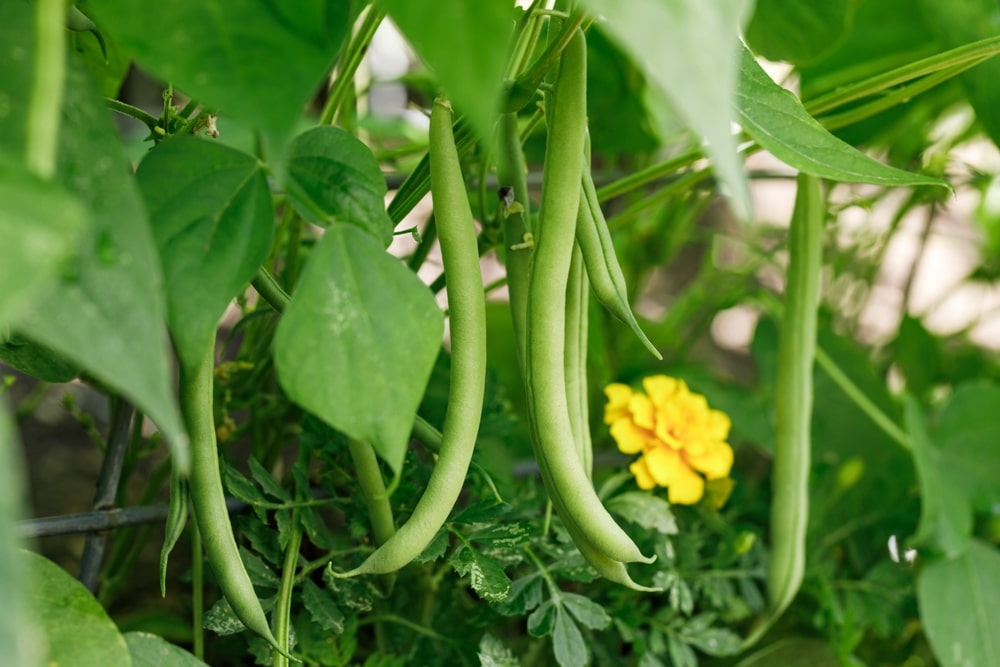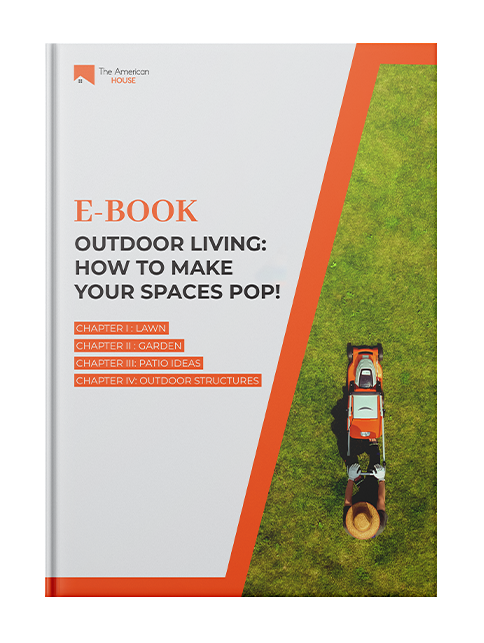Want a beautiful garden but need help knowing where to begin? You’ll love these beginner-friendly vegetable options!
Trying to cultivate your own garden is an exciting effort filled with promise and a touch of green-thumb suspense. But choosing suitable veggies can be daunting for those just dipping their toes into the rich soil of gardening.
Well, aspiring gardeners, The American House is here to guide you through the lush gardening world with our spotlight on beginner-friendly vegetables.
Just picture strolling through your backyard, plucking crisp lettuce and ripe tomatoes straight from the earth, knowing you’ve nurtured them from tiny seedlings to a delicious harvest.
Your dream is entirely within reach, and success is virtually guaranteed with the proper choice of vegetables. We’ll introduce 10 beginner-friendly vegetables to get you started.
They’re your ticket to a flourishing garden. So, grab your gardening tools, and let’s dive into the satisfying world of homegrown goodness!

Beginner-friendly vegetable: Cucumbers
-Sun requirements: Full sun
-Height: 3-12 feet, depending on trellis system
-Hardiness zones: 4-12
Today, some cucumber varieties have extensive disease-resistance packages, making them a tremendously easy veggie to grow. To make it easier on your back while harvesting, put up a strong fence and grab a vining variety.
You can even begin your cucumbers indoors so when the spring weather breaks, they’re ready to be transplanted and protected with row cover. This will protect them from powerful winds and lingering snowfall if you live in the Midwest and Northeast.
They can withstand a light frost when young with little to no harm. The biggest issue you’ll likely face when growing cucumbers is the pesky cucumber beetle, which can defoliate your crop overnight. The best defense, though, is delayed spring planting.
Ideally, the first generation of beetles that hatch from overwintered eggs perish without an abundant food source, reducing future generations. By the second generation, your more established plants can defend themselves more efficiently.
Covering these beginner-friendly vegetables with insect netting can also help. But, since adult beetles can overwinter in the soil where last year’s crop was, they might hide under the netting without you realizing it.
Scouting daily and hand-picking is your best defense if you catch them, which is most effective in the early morning when they’re least active. If you’re growing cucumbers in a small space, try redirecting the beetles to a trap crop or a different plant they like to feed on.
Beginner-friendly vegetable: Carrots
-Sun requirements: Full sun
-Height: 1-2 feet
-Hardiness zones: 3-10
If you have composted and well-draining soil, try growing some delicious carrots. This fun and easy vegetable has early, mid-season, and storage varieties available in every hardiness zone.
Since they can germinate for up to three weeks, your garden should be weed-free so there’s no competition when they begin sprouting. Continue to cultivate between the rows of carrots while they’re still small. This beginner-friendly vegetable takes about 70 days to mature.
But trust us! They’re worth the wait! Common carrot pests can include the carrot rust fly and wireworm, which can be avoided by crop rotation and delayed planting.
The first generation of the carrot rust fly typically hatches in May and June, so if you sow seeds after that, it’s likely the first generation has died due to lack of food.
Wireworm populations can be decreased by adding advantageous nematodes to your soil or trapping and removing them. If you have a nasty infestation, you can try inverting your soil to expose the worms, leaving them vulnerable to natural pests like birds.
If you have deer roaming around in the fall, be sure to cover your carrots to protect the greens from being munched on by the deer.

Beginner-friendly vegetable: Green Beans
-Sun requirements: Full sun
-Height: Roughly 2 feet
-Hardiness zones: 3-10
Green beans perform well all summer and well into fall. They’re wildly abundant in drought and rainy conditions, and there’s nothing like the crunch and flavor of fresh beans that were homegrown.
These beginner-friendly vegetables are fantastic for freezing, canning, and eating fresh. If you have indoor space at your disposal, begin these seeds indoors after the possibility of spring frost passes and the soil has started to warm up. Sow them in a 50 or 72-cell tray.
In a couple of weeks, transplant them into your garden bed, giving them about 6-9 inches between each plant, placing them three across in a 30-inch bed. But remember, bean and seedlings don’t like their root ball disturbed. So, take extra consideration when transplanting.
You can also directly sow them. Once planted and they begin to grow, watch out for mice and be ready to fill gaps where seeds don’t germinate.
Cover your beans with insect netting if you experience grasshopper or beetle damage in the spring, and remove it when flowers begin to appear.
Water them consistently until they’re well established, especially during hot periods, and cover them with 30% shade cloth if it’s scorching outside to help them settle into their new home.
In approximately two months, gently flip over the plants to notice you’ve hit the bean jackpot! Bend a bean, and if it snaps cleanly in half, then it’s ready to be harvested.
Beginner-friendly vegetable: Lettuce
-Sun requirements: Full sun to partial shade
-Height: 9-40 inches
-Hardiness zones: 2-11
This beginner-friendly vegetable is a wonderful, easy vegetable for newbies because there’s a vast range of options to choose from. You can partner it with many other crops, and you can grow them multiple times each growing season.
Wherever you live, there’s something suitable for your region because lettuces vary from cold-hardy to heat-loving, and some can even resist drought conditions. Check the package of whatever variety you choose for germination tips and overall care.
You can even plant them next to a fence full of sugar snap peas and tomatoes or surrounded by green onions, wherever you have additional space. This veggie tends to be a moderate to heavy feeder. So, ensure your soil is suitably amended.
A great feature about oak leaf, frilly, or butterhead head lettuce sorts is that you can choose to pull off the outer leaves for a sandwich whenever you want or wait until the whole head is ready to harvest.
We recommend trying many different types in your garden and see which ones work best for you in your space.
Beginner-friendly vegetable: Cherry Tomatoes
-Sun requirements: Full sun
-Height: 4-8 feet
-Hardiness-zones: 2-11
There’s nothing better than grabbing the first cherry tomato and eating it ripe off the vine. A few fantastic foolproof varieties for beginners are Sakura, Sungold, and White Cherry.
These beginner-friendly vegetables are particularly cold-sensitive. So, start them indoors and don’t transplant them outdoors until there’s no risk of extended periods of 50 degrees or below. This could impede their growth and impact productivity for the entire season.
And remember to keep a row cover handy for nippy nights. They’ll need trellising for support, or they’ll flop over. So be prepared to have space to install t-posts and implement the “Florida weave” method, a high tunnel trellis system, or strong tomato cages.
This veggie will begin to ripen on lower trusses first, moving its way up the main stem. As you begin to harvest, snip off empty trusses and excessive leaves to supply more airflow and reduce infection risk. This sort of tomato can become wild if you don’t prune it regularly.
Any new growth between a leaf and the stem that grows up is called a sucker. The tomato is trying to produce more fruit with these suckers.
However, it will only interfere with the primary stem growth and take energy away from already-ripening fruit. So you should snip these off when you see them.

Beginner-friendly vegetable: Potatoes
-Sun requirements: Full sun
-Height: 30-40 inches
-Hardiness zones: 3-10
Potatoes are generally planted from April to June and harvested sometime between late August and October, depending on the growing region. Where do potato plants come from?… Potatoes!
A piece of potato with an eye serves as a seed potato, although an eye isn’t needed to grow a potato plant successfully. Clancy is a red-to-gold potato that can be grown from seed like any other vegetable!
Simply place the pieces in the ground about six inches deep, eye side facing up, and bury them with soil. Be sure the dirt is hilled throughout the growing season. This keeps them from getting too much solanine, which can be unsafe for consumption.
Alternatively, you can use a fabric grow bag, or you can dig a hole for each seed potato in the ground. These beginner-friendly vegetables are inclined to rot with too much moisture. So, your soil should be composted and well-draining.
Add some straw to the paths to keep any weeds from sprouting and to keep the sun off any potatoes that start to pop out of the ground.
We hope you found this post on beginner-friendly vegetables helpful. Be sure to let us know in the comments which of them you plan to include in your garden. And to help you out in your garden, here’s one of our favorite garden hoses from Amazon!
Meanwhile, if you lied this article, The American House also recommends: 4 Stunning DIY Butterfly Feeders to Transform Your Garden




